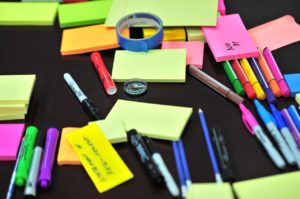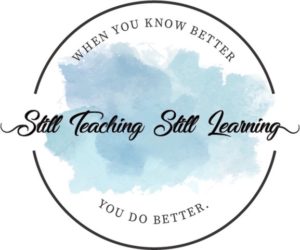
So much to do, so little time.
If you’re a teacher and you are constantly frustrated by this fact of teacher life, keep reading. I have 10 tips to help you be more productive at school. You can get the most important stuff done for school while still leaving time and energy for the other important parts of your life.



1 – When you make your list of daily things to do, keep it to 3-5 items. I know, I know – you always have more to do than that. But – if you think about the top MOST important things to get done, you can probably narrow it down to 3-5 items. You can always add other tasks if you finish that list! But allow yourself to feel productive and on top of your major tasks by just listing 3-5 tasks to do on any one day.
2 – On that list of 3-5 tasks, decide what you will do first and put a number one beside it. Then do the same for the other tasks. That is saving you time by making the decision once. You are deciding when you will do each task so that when you finish each task, you automatically know what you will work on next.



3 – This is my favorite teacher workday strategy. If I have a day (or part of a day) in my classroom, I make a list of what I want to accomplish on the board. (I also number the tasks, like tip #2 above.)
Somehow, when you feel like you have a chunk of time, it’s amazing how little you can actually get done. You might find yourself walking to one area of the room to do something, then being distracted by some other area that needs something else. Before you know it, your time is up and you’ve accomplished nothing (or very little).
Decide how you will use that time, make a list, make it public for yourself by putting it on the board, number the tasks, and get after it.
4 – When I’m working on a task, I often think of something else I need to get done, or something I need to check online, etc. To keep myself focused on the task at hand, without forgetting about that sudden inspiration, I jot that task on a sticky note. When I finish my current task, THEN I’ll check that sticky note and do anything that I might need to do. That keeps me from jumping around online and distracting myself.



5 – Create templates of your routines for doing certain things. Field trips, for instance. (Well, field trips before COVID-19, that is.) Create a list of the things that need to be done before the trip, what needs to be done the day before, the morning of, after the trip, etc.
I also create templates of my weekly things to do. I list each day, then what has to be done on each of those days, along with what I would like to get done on those days (prepping for a subject, collecting books for guided reading groups, etc.). I have printable templates HERE.
6 – Batch your tasks. You hear this advice everywhere, but how does it apply to teaching? List the tasks that could be batched together (making copies, grading papers, creating anchor charts, gathering texts for guided reading groups, responding to emails, etc.). Then schedule a time during the day or the week when you will do each “batch” of tasks.



7 – If grading papers is too overwhelming to do in one big batch (it always is for me), then just plan to grade one set of papers per day OR plan for only grading papers for a certain amount of time.
8 – Email – it’s a necessary evil, isn’t it? You could spend all day in your inbox and still never feel caught up. Try to check email only three times a day: before school, during your prep/planning period, and after school.
Another tip: set a timer for checking email and stop when the timer goes off. That will keep you from spending your entire prep/planning period on email and not getting other tasks done, which are probably more important.



9 – Speaking of timers – a timer is your best friend. Not only is it a great tool for keeping students on track while working on different tasks, but it helps you to stay focused as well. I use a timer while checking email during my planning period, when I’m grading papers, and when I’m working on tasks after school but need to leave by a certain time.
10 – Having a morning routine and evening routine at home is really important for my mental and physical health. So I developed my own morning and evening routines for school as well.



Here is my sample morning routine:
*say good morning to co-workers
*turn on lamps in my classroom
*turn on Smartboard
*put my lunch away
*open my teacher planner and check my to-do list for the day
*set up my slides and websites and whatever I need for my first two subjects of the day
*check email – clear out junk or unneeded emails; star emails to come back to later in the day; respond to any emails that I can respond to very quickly
*sip a cup of coffee or tea and read a quick teacher devotional



Here is my sample afternoon/ending the day routine:
*spend 15 minutes clearing up the classroom (I have my students do a lot of this, but I spend a few minutes clearing up my own stuff or anything else that needs to be tidied up)
*organize papers to be graded
*set up whatever I can prep for the next morning
*change the date and schedule on the board (if I didn’t have my students do it earlier)
*make notes about the day/journal
*make my to-do list for the next day
*clear off my teacher space
*pack up my bag and lunch bag



To review: focus on 3-5 of the most important items on your to-do list, number that list in the order you will do the tasks, write your to-do list on the board, keep a sticky note close by for random thoughts that pop up, create templates for your routines, batch your tasks, grade papers in batches, limit your email checking, use a timer, and develop a morning and afternoon/end of day routine.
Let me know which of these tips works for you!
